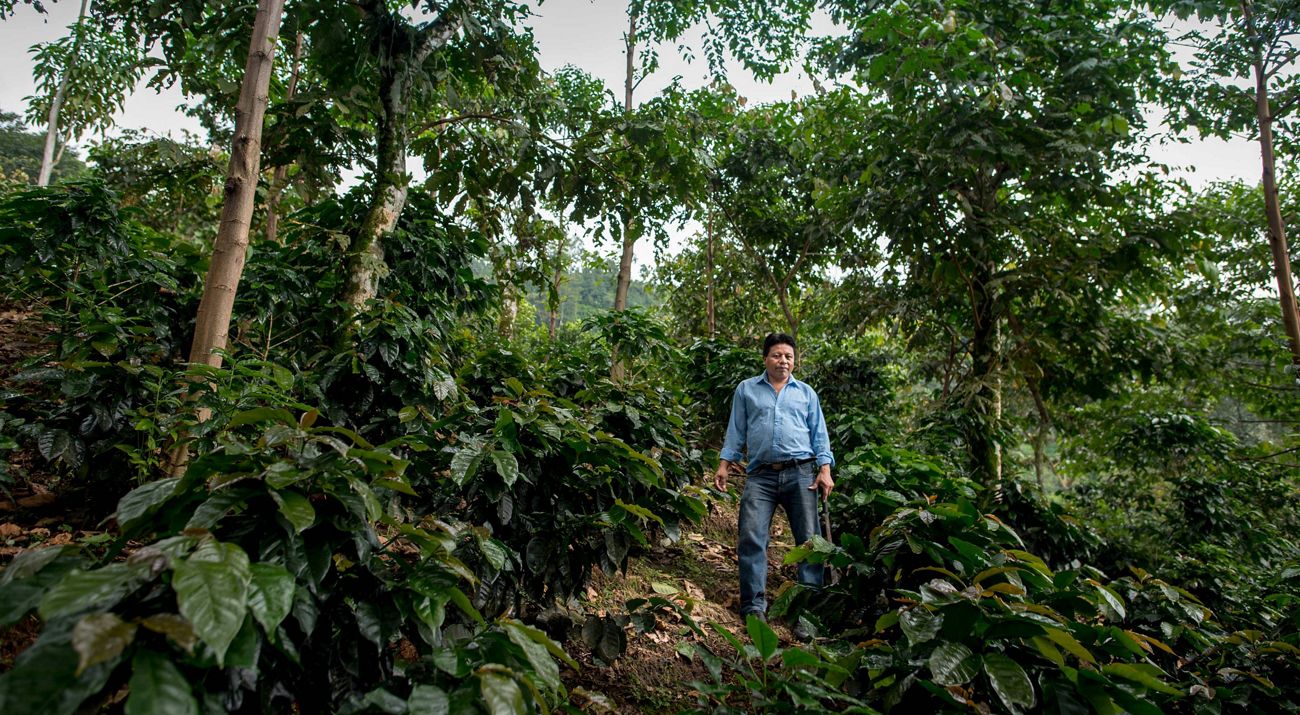Growing Green
TNC works every day with farmers, ranchers and fishers who want to conserve natural resources and reduce their impact on the environment.
Spring 2018
René Gaspar, Coffee Farmer, Guatemala
Plants trees to protect his coffee
René Gaspar grows many crops to feed his family, but coffee is his livelihood. The 46-year-old has been farming in La Igualdad, a community of coffee farmers in the highlands of Guatemala, since he was a kid, inheriting the family plot and expanding it to 3.2 acres. It’s a large farm for the region, with rows of coffee bushes running along steep slopes. But Gaspar’s crop was hard-hit in 2012, when changing rain patterns brought a fungal rust that killed 75 percent of his coffee crop . The 60-member cooperative that Gaspar belongs to lost half of its crop that year, as well as its organic certification.
“Other funguses have hit, but nothing to this magnitude,” Gaspar says. “It literally wiped out coffee across the region.”
After the rust, many farmers migrated north to Mexico, but Gaspar picked up work to make ends meet. He also collaborated with The Nature Conservancy’s staff to safeguard his farm against the fungal rust, replacing dead coffee plants with a variety that resists fungus, and adding guama trees to provide shade. The shade evens the temperature and humidity of the farm so the rust can’t take hold, and the trees stabilize the steep slopes to prevent soil runoff into rivers.
Five years after the die-off, Gaspar’s farm and the cooperative are healthy, and the cooperative is on the verge of regaining its organic certification. Last fall delivered a strong harvest with no sign of the rust. “All of my children help out during the harvest, filling wicker baskets with cherry-red coffee beans,” Gaspar says. “It’s tough work, but it’s a joyful occasion—seeing your hard work pay off.”
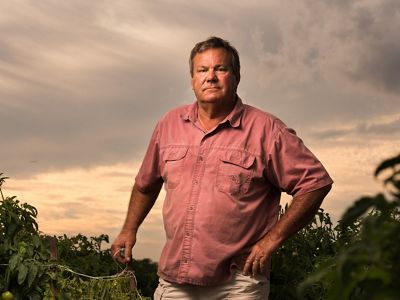
Gary Reeder, Tomato Farmer, Florida
Grows tomatoes with less water and fertilizer
If you're living in the Northeast and eating a ripe tomato in the winter, there’s a good chance Gary Reeder grew it. Reeder’s West Coast Tomato farm in Manatee County, Florida, grows roughly 50,000 pounds of tomatoes per acre. “I didn’t want anything to do with farming tomatoes when I was a kid,” says Reeder, who quit college to help his dad run the family farm. “But now I love it. It’s a passion. I want to grow the best crop I can.”
Reeder has partnered with the state agricultural extensions and The Nature Conservancy, who are developing farming practices that limit fertilizer reaching waterways. Reeder is adept at micromanaging his farm’s fertilizer regimen, while reducing and isolating insecticide spray to only the plants that need it. He builds a water table under the plant beds that allows him to adjust the moisture levels when necessary, which then activates the fertilizer that’s placed on top of the beds. The practice reduces the amount of water and fertilizer it takes to grow a tomato.
The benefits are tangible. Reeder’s farm is at the headwaters of the Manatee River, surrounded by a 24,000-acre watershed preserve. Rainwater runs clear from his farm into the drinking water for the county. “People assume that farms cause so many environmental problems, but we’re doing things the right way here,” Reeder says. “What happens on this farm is reflected in the land surrounding it.”
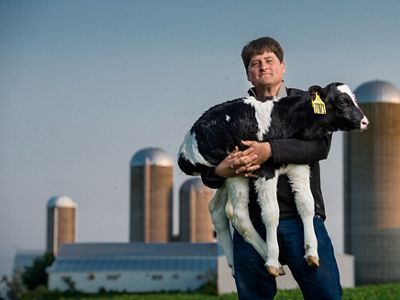
Lee Kinnard, Dairy Farmer, Wisconsin
Makes his fields and local streams healthier
Lee Kinnard is farming the same ground his father farmed. And his father’s father. Kinnard is the latest in a long line of dairy farmers, going back to Belgian immigrants who settled near Lake Michigan.
“There’s a legacy here,” Kinnard says. “We’re connected to the land, to the community. … It would be silly to think that, as farmers, we don’t have an effect on the environment surrounding our land.”
Traditional dairy farming practices have had a negative impact on water quality—soil and fertilizer run into streams after heavy rains and seep into the groundwater. So Kinnard takes a progressive approach to managing the 11,429-acre farm that feeds his cattle. He introduced winter cover crops like triticale and barley to hold the soil in place. And he is using notillage farming, which eschews mechanical tilling for a “direct drilling” method that inserts seeds into the soil, leaving the top layer of earth intact to reduce erosion. It’s a massive effort to negate the farm’s impact on local water sources and increase the soil’s organic matter, decomposing plant tissue that helps soil grow healthier crops and retain water.
The Nature Conservancy shares Kinnard’s practices and research from his farm with the Dairy Business Association and farmers managing 160,000 acres in Wisconsin. “We’ve already seen a difference in our land,” Kinnard says. “Little creeks that used to run red with clay after a heavy rain are clear now. … We’re even regenerating organic matter [in our soil]. We’re looking at regenerative agriculture now, not just sustainable.”
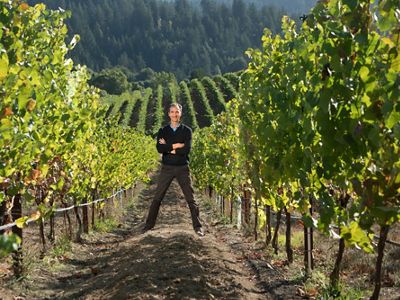
Arnaud Weyrich, Vintner, California
Saves water for wild salmon
“I always wanted to work with food,” says Arnaud Weyrich, vice president and winemaker at Roederer Estate, a winery and vineyard in Northern California’s Anderson Valley. “And being French, there was always a bottle of wine on the table. Maybe it was inevitable.”
The vineyard grows pinot noir and chardonnay grapes and specializes in sparkling wine, but lately Weyrich has been thinking about fish. That’s because Roederer and most vineyards in the Anderson Valley pull water from the Navarro River and its tributaries. The river provides habitat for endangered coho salmon swimming upstream to spawn and to young salmon who spend their first year in the tributaries before heading out to sea. Pull too much water during the dry season and the creeks become impassable and salmon populations crash.
So Weyrich partnered with The Nature Conservancy, which is trying to find ways for the fish and grapes to coexist. The partnership centers around a strategy: store water during the rainy seasons to reduce the strain when it’s dry. Roederer Estate has installed water storage ponds and an expansive system to recapture and reuse irrigation runoff.
“We know we can mitigate California’s dry season by storing water,” says Weyrich. “You can’t control the rain.”
Now, TNC is working with state agencies to create new winter water rights, which would allow wineries to pull—and keep—water from streams when they are full from heavy seasonal rains. That will leave more in the rivers when salmon need it the most.
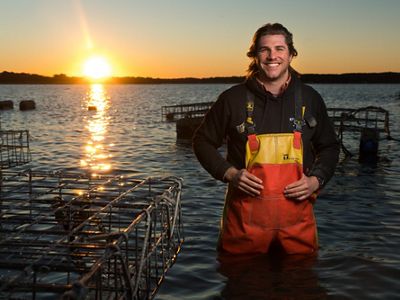
Tom Perry, Oyster Farmer, Virginia
Demonstrates how oysters clean our bays
Tom Perry spent two months kayaking portions of the Chesapeake Bay, looking for the ideal place to grow oysters. What he found was White Stone, a small Virginia community between the Rappahannock and Potomac rivers.
White Stone is located in a unique spot where the water’s saltiness fluctuates during tides. Perry, who leases 500 acres of bay from the state, grows oysters in metal cages that float just below the water’s surface. “There’s a noticeable break in the salinity, so the oysters’ [flavor] takes on a mid-level salt that’s noticeable, but not overpowering.”
Perry and White Stone Oyster Company are part of an aquaculture economy that is booming in the Chesapeake Bay. The shores and river bottoms in White Stone used to be covered with wild oysters. But their populations dwindled to just 1 percent of their historic population during the 20th century because of overharvesting, disease and pollution. In the process, the bay lost the filtration benefits of oysters, which suck in water and remove nitrogen, phosphorus and sediment. Each oyster filters up to 50 gallons of water per day.
While The Nature Conservancy has helped restore hundreds of acres of sanctuary reefs in the bay, the organization also sees commercial growers like Perry as partners in bringing oysters back. The Conservancy is collaborating with scientists and growers to measure water-quality changes near oyster farms (watch a video about that research at nature.org/aquaculture). They hope to quantify improvements observed by growers, such as increases in fish and sea grasses near cages.
